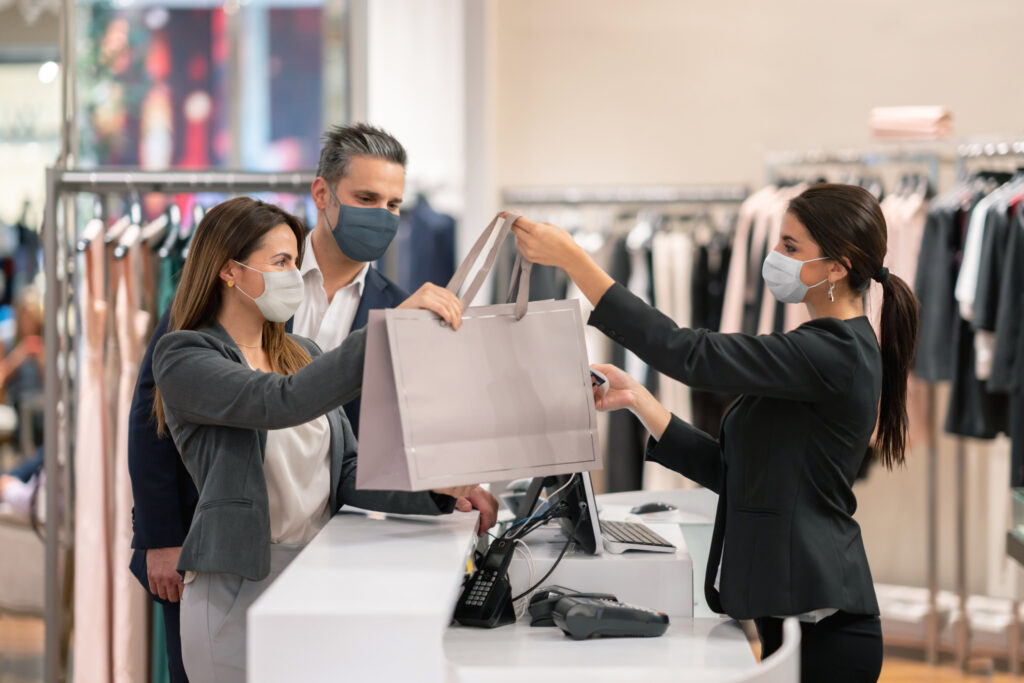Fashion Retail Industry Trends - From Catwalk To The Checkout
Welcome to the dynamic world of fashion retail industry trends, where fashion retail landscape is constantly evolving, driven by changing consumer preferences, technological advancements, and societal shifts.
Author:James PierceReviewer:Elisa MuellerFeb 20, 2024439 Shares25.8K Views

Welcome to the dynamic world of fashion retail industry trends, where fashion retail landscape is constantly evolving, driven by changing consumer preferences, technological advancements, and societal shifts. Staying abreast of the latest trends is not just a choice but a necessity for businesses striving to thrive in this competitive arena. In this article, we'll dive into the key trends shaping the fashion retail industry today, exploring how e-commerce, sustainability, technology, and other factors are influencing the way we shop and experience fashion.
Importance Of Staying Informed
Imagine stepping into a world where everyone has their unique preferences, be it in fashion or gadgets. Remaining in the loop about the latest trends is akin to possessing a secret map to what people find exciting and fashionable. But why is it crucial to be aware of what's currently popular? Let's delve into the details.
Fitting In With The Cool Crowd
First and foremost, staying informed about the latest trends helps you seamlessly blend into various social scenes. Picture attending a party where everyone is sporting the newest and coolest styles, and you show up in something outdated.
It might feel a bit like missing the memo. Being aware of trends ensures that you're part of the stylish conversation, aiding you in selecting outfits that perfectly match the vibe of the moment.
Trends As Cultural Signposts
Secondly, trends can tell a fascinating story about what's happening in the larger world. Just as a sudden surge in the use of a new app or discussions around a particular topic signifies an exciting development, fashion trends often mirror societal values. They can reflect environmental consciousness, support for various causes, or simply a collective expression of creativity.
Shopping Savvy
Thirdly, being aware of trends proves incredibly beneficial when navigating the aisles of your favorite stores. Picture walking into a shop, finding an incredible sale on clothes, but you're unsure about what's considered cool at the moment. Armed with knowledge about current trends, you can snag the best deals on items that are not only affordable but also right in line with the latest styles.
The Joy Of Trendspotting
Lastly, staying informed about trends adds an element of fun to life. It's akin to being part of a vast, global club where people share their passions and preferences, be it the latest dance moves, tech gadgets, or fashion styles.
In the realm of trends, there's a constant sense of excitement, always anticipating the next big thing just around the corner. So, keep your eyes and ears open, you never know what cool trend might be waiting to captivate your interest.
Challenges Of Retail Industry
- Intense Competition -Retailers operate in a highly competitive environment. Not only do they compete with other brick-and-mortar stores in their vicinity, but they also face formidable competition from online retailers. This necessitates constant innovation and differentiation strategies to capture and retain customers.
- Technological Advancements -The rapid pace of technological changes poses a challenge for retailers. Embracing e-commerce, digital payment systems, and other technological advancements requires significant investments and adaptability to stay relevant in the market.
- Supply Chain Complexity -The journey of products from manufacturers to store shelves involves intricate supply chain processes. Retailers must navigate challenges like delays, disruptions, and ensuring efficient inventory management to prevent shortages or excess stock.
- Evolving Consumer Preferences -Consumer tastes and preferences can shift rapidly due to various factors, such as trends, cultural influences, or economic conditions. Retailers must remain agile and responsive to these changes to offer products and experiences that resonate with their target audience.
- Economic Volatility -The retail industry is sensitive to economic fluctuations. During economic downturns, consumers may reduce discretionary spending, impacting retail sales. Retailers need strategies to weather economic uncertainties and maintain financial stability.
- Overhead Costs -Running physical stores involves significant overhead costs, including rent, utilities, and employee wages. Balancing these expenses while ensuring competitiveness and profitability poses an ongoing challenge for retailers.
- Online Retail Dominance -The rise of e-commerce giants has shifted consumer shopping habits. Traditional retailers must contend with the online competition, necessitating a strong online presence, effective digital marketing, and seamless multichannel experiences.
- Customer Experience Management -Providing a positive and consistent customer experience is critical. Challenges in customer service, inefficient store layouts, or outdated technology can negatively impact the overall shopping experience, leading to customer dissatisfaction and potential loss of business.
- Inventory Challenges -Striking the right balance in inventory management is essential. Retailers face the dilemma of avoiding overstock, which can lead to losses due to markdowns, as well as preventing understock, which results in missed sales opportunities and dissatisfied customers.
- Regulatory Compliance -Retailers must navigate a complex regulatory landscape, adhering to various laws and standards. Compliance with labor laws, product safety regulations, and environmental sustainability requirements adds an additional layer of complexity to retail operations.
New Trends In Fashion Retail Industry
Sustainable Fashion Practices
One prominent trend in the fashion retail industry is the growing emphasis on sustainability. Consumers are becoming more conscious of the environmental impact of fast fashion.
Retailers are responding by adopting eco-friendly practices, such as using organic materials, reducing waste through recycling initiatives, and promoting ethical labor practices. This trend reflects a shift towards more responsible and environmentally friendly fashion choices.
Digital Transformation And E-Commerce
The rise of digital technology has revolutionized the way people shop for fashion. E-commerce platforms are gaining prominence, offering consumers the convenience of shopping from anywhere.
Fashion retailers are investing heavily in their online presence, enhancing user interfaces, and utilizing augmented reality for virtual try-ons. The integration of technology in the shopping experience is not only convenient but also provides a personalized and immersive experience for consumers.
Inclusive Sizing And Diversity
The fashion industry is undergoing a significant transformation in terms of inclusivity. There is a growing recognition of diverse body shapes, sizes, and cultural backgrounds. Fashion retailers are expanding their size ranges to cater to a broader customer base.
Moreover, there is an increasing focus on representing diversity in advertising and marketing campaigns. This trend not only promotes body positivity but also acknowledges the unique styles and preferences of a diverse customer demographic.
Experiential Retail And Pop-up Shops
Traditional brick-and-mortar stores are adapting to changing consumer preferences by incorporating experiential elements into the retail space. Pop-up shops and temporary installations provide a unique and interactive shopping experience.
These events often feature exclusive products, limited editions, and interactive displays, creating a sense of urgency and excitement among consumers. The aim is to make shopping not just a transaction but an enjoyable and memorable event, fostering a stronger connection between the brand and its customers.
Fashion Retail Industry Trends - FAQ
What Is The Fashion Retail Industry?
Fashion retail describes businesses that sell clothes and accessories directly to customers in store. There are four main types of fashion retail businesses including highstreet chain stores, department stores, luxury brands and independent boutiques.
What Is A Trend In The Fashion Industry?
What can be defined as a trend? A way of dressing, styling, or behaving that is evolving and becoming visible. Something fashionable or popular during a particular timeframe, starting from separate key items and the combination of forms and colors to a general look and way of dressing.
Is Retail The Same As Fashion Industry?
The fashion industry consists of four levels: the production of raw materials, principally fibres and textiles but also leather and fur; the production of fashion goods by designers, manufacturers, contractors, and others; retail sales; and various forms of advertising and promotion
Wrap Up
As we conclude our exploration into the ever-evolving realm of fashion retail industry trends, one thing becomes abundantly clear-adaptability is the key to success. In a world where change is constant, businesses must embrace innovation, sustainable practices, and customer-centric approaches.
Whether it's navigating the challenges of e-commerce dominance, championing sustainability, or integrating cutting-edge technology, the fashion retail industry's future lies in the hands of those who can anticipate, adapt, and lead the way in shaping the trends of tomorrow.

James Pierce
Author

Elisa Mueller
Reviewer
Latest Articles
Popular Articles
